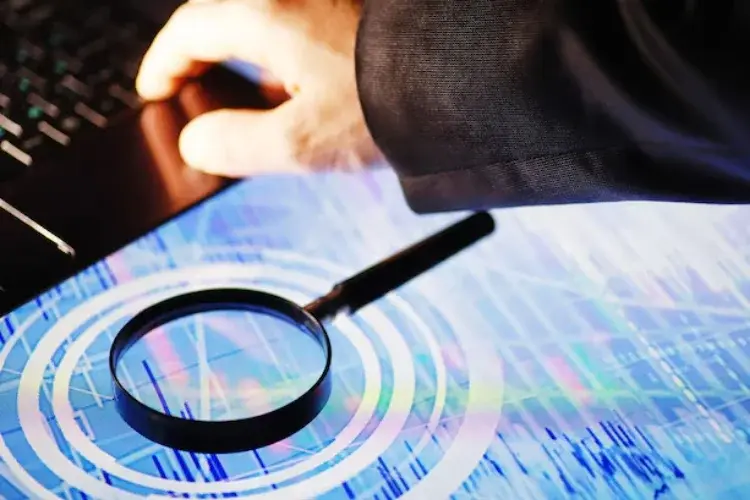What Is Asset Identification? Methods And Importance
Asset Identification is a systematic process of assigning an identity to your assets. It simplifies asset tracking, strengthens security management, improves the asset lifecycle, and ensures better control over your IT infrastructure and inventory.

Companies use different methods for asset identification, including RFID tags, serial numbers and GPS tracking.
Proper asset management saves operational cost, preventing asset loss. At the same time, it enables business owners to ensure regulatory compliance of their industry.
Are you looking to identify the correct definition of an asset within IT infrastructure? You’re in the right place this article explores various approaches and key factors essential for ensuring business continuity.
Understanding Asset Identification and Asset Information
Table of Contents
Assigning value to an asset is called asset identification. On the other hand, asset information provides all the relevant data about an asset, such as location, condition, and maintenance history. It delivers the following positive outcomes to your business.
- Full visibility into the assets
- Ensure asset management
- Promising data accuracy
- Proactive maintenance
- Operational efficiency
Asset information encapsulates all types of meaningful data with economic value that truly supports the asset lifecycle. This data can be in the form of a document, or other information-based resource that is thoroughly owned, managed, and maintained by a business organization.
Concerning security requirements, incautiously labeled assets or unknowingly duplicate labels can elevate the risk of compliance issues. This error doubles the chances that you will fall behind the preventive maintenance, putting your assets inventory at risk of being lost or stolen. Learn more about the types of security to invest in for your business to mitigate these risks effectively.
How to Identify Different Types of Assets
If you want to understand how to identify asset management strategies that enable the company to achieve business objectives, explore different kinds of assets. These assets require unique strategies for quick identification. Let us break down their different types to help you identify them for seamless asset management.
Current Assets
These assets are ready to be converted to cash, typically almost within a year. The current assets cover cash reserves, inventory, and accounts. Clear labels in the form of barcodes or asset tags can help one easily identify present assets. A clear identification keeps you updated on what is in your stock. Adding more, organizations can easily monitor their items with real-time information on their current assets.
Fixed Assets
If a company uses long-term resources over a string of years, better known as fixed assets. These include vehicles, property and machinery. These assets are valuable but prone to depreciation. How to find fixed assets? Not so difficult. Assign a unique ID number coupled with digital tags or RFID technology for efficient tracking of the state, location, and maintenance.
Identifiable Intangible Assets
Even intangible assets, such as copyrights, trademarks, and software, hold significant value despite being non-physical objects. These assets are more associated with corporate operations. The next step is to identify asset management cybersecurity for these intangible assets.
Their monitoring can be a little bit abstract in the form of renewal dates, ownership records, and other software-related expenses. An ID to every patent or license, such as expiry dates and related expenses, helps to avoid operational disruptions and compliance issues.
What are the Key Techniques of Asset Identification?
Proper identification methods play a critical role in asset management. They help you assign tags and track the assets effortlessly. In businesses, assets can range from tangible items to intangible items. Let’s face the reality that without leveraging a trusted method to identify and catalog these assets, companies can seriously run the risk of losing track of meaningful resources. It may further lead to monetary losses, security risks, and inefficiencies. This section explores the most common methods and the importance of managing your valuable assets through the ID number.QR Codes
Qucik response (QR) code is generally an arrayc of black and white squares. It contains information that devices read to execute a certain task. Simplifying the process of scanning while saving time. Business owners can also use these codes to track the number of devices that need repair.Barcodes
It is a commonly used type of tagging for asset identification. Barcoding is based on a unique number and a distinct series of parallel lines. The widths and spacings are visible on it. The barcode scanners such as barcode scanning apps and handheld barcode scanners read cautiously to log data in an inventory tracking and maintenance system. This is a widely recognized, easy to execute and cost-saving method for small to medium-sized operations. Using this method businesses can easily update data in real-time, mitigating manual errors.RFID Tags
When it comes to secure asset utilization, radio frequency identification tags are the ideal method to control the high rates of ransomware attacks. How? It uses electromagnetic fields to track the unique tags associated with your assets. These tags don’t require line-of-sight to transmit data. There are some high-valued fixed assets like cars and machinery which are often RFID-based. These tags can be read remotely and assets can be traced with limited access.GPS Tags
Another method of asset tracking and proactive resource allocation is GPS tags. They update you with comprehensive details on the real-time location of a tagged asset. Business organizations usually tag tangible assets like vehicles and other high-value assets with GPS tags to assist in timely and effective tracking or loss recovery.NFC Asset Tags
Near field communication (NFC) asset tags are small devices. These are specifically used to track and identify assets. Containing information such as purchasing history of a product and total number of available inventories. NFCs can be read through smart devices.What is Asset Identification in Cybersecurity?
In a digital environment where technological advancements are expanding at a rapid pace, businesses face multifaceted IT challenges, including asset identification, adaptability, and resource management. To effectively address these challenges, rely on Co-Managed IT experts for customized support and effective solutions.
As businesses migrate to cloud technology for smooth accessibility, implementing strong hybrid cloud security is a strategic plan to ensure effective asset identification, tracking and preemptive action.
To get a sponge overview, identifying assets within your IT infrastructure such as computers, servers, or other vulnerable information is about a clear understanding of asset movement, monitoring and access control to mitigate the impact of cybersecurity threats. The following are the key deliverables.
- Asset identification offers visibility to track vulnerabilities.
- Assign the ID numbers to computer hardware components for the management of equipment efficiently.
- Narrow entry points for cyberattacks and ensure data integrity
- Assign unique IDs to each intangible software asset (check usage, trace outdated or susceptible versions)
- Ensure the maintenance of a secure IT environment.
Key Benefits of Reliable Asset Identification
Let’s explore the significance of trusted and effective asset identification that drives the performance of your business in an upward trajectory.
1. Better Forecasting and Planning
It allows businesses to make more insightful projections regarding asset utilization, trading, and record management. Proper planning ensures data accuracy and efficient risk assessment.
2. Improved Operational Efficiency
Knowing your asset’s location and operational dynamics helps organizations make key decisions. Proper tagging of every item ensures effective resource utilization.
3. Transparency and Collaboration
Smooth and positive communication on the departmental level ensures easy access to fundamental data. Openness among team members guarantees optimal asset management and operational coherence.
4. Control Equipment Loss
Reducing equipment loss is a significant advantage of asset identification. Companies gain complete visibility to track asset locations using unique identifiers, providing up-to-date information about assets.
5. Consolidate Tax Filing
Timely identification and tracking of assets enhance financial accuracy by enabling proper depreciation calculations for fixed assets. This simplifies the process of filing accurate tax returns.
Productivity and Maintenance with Asset Identification
Asset identification not only enhances productivity by enabling employees to locate and manage resources efficiently but also simplifies maintenance processes through timely upkeep, reduced downtime, and extended asset lifespans.
Upgrade Employee Productivity: Asset identification reduces the burden on employees by helping them spend less time locating items and more time on valuable tasks. Barcodes and scanning tools enable workers to quickly update inventory records.
Guarantees Regulatory Compliance: Meeting regulatory requirements for asset tracking allows workers to provide audit trails easily. Advanced tools, like RedBeam asset tracking software, automate the generation of audit logs.
Simplify Maintenance Process: Timely maintenance is essential to avoid breakdowns and extend asset lifespan. The asset identification process simplifies tracking maintenance schedules, ensuring the condition of fixed assets is examined regularly. This streamlines maintenance programs and highlights the business’s overall value.
Key Insights to Remember
At the core of exceptional asset management, asset identification is simplifying the tracking of tangible and intangible assets. Whether your business is facing the challenges of Internet of Things or physical assets, kickstart your asset management journey with a trusted and easy-to-use tracking system to avoid operational and maintenance pitfalls.
Facing IT Challenges in Chicago?
Schedule a consultation with our expert team to get the help you need!
Related Articles

Saas Security Posture Management

Asset Identification for Endpoint Security Management


